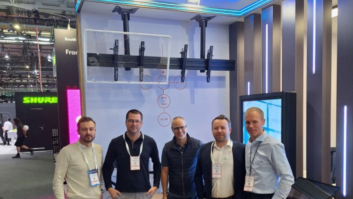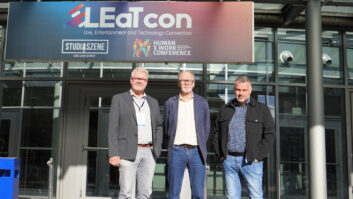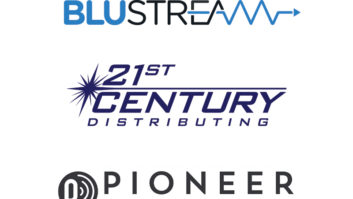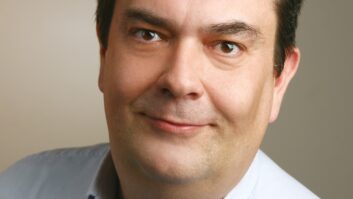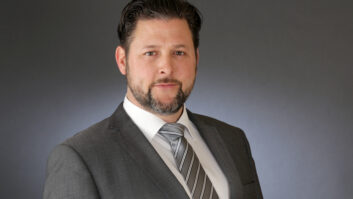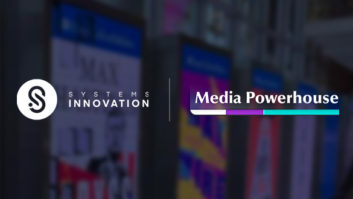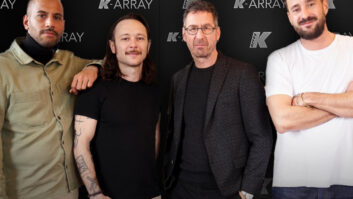Previous geographical focus features have – perhaps inevitably – pitched Germany and Austria as dual powerhouses of the European installation business. Generously equipped with cutting-edge performance venues and corporate facilities, the two countries have long been rewarding territory for AV suppliers and integrators.
In many ways, this continues to be the case, although there is no denying the potential challenges posed by the economic crisis. Public sector investments may be largely unaffected, but private organisations are increasingly inclined to delay projects until circumstances improve, spelling a more problematic period for installers and distributors.
While some observers might argue that the country has never fully recovered from the economic impact of reunification, Germany was regularly registering creditable annual real GDP growth of more than 1% until 2008, thanks in significant part to its phenomenal exports business.
With global demand declining rapidly, however, the long-term economic outlook is now decidedly uncertain. The IMF and the World Bank have both indicated that, along with Spain, they expect Germany to be one of the hardest-hit economies in the eurozone. There is no shortage of economists who expect Germany’s downturn to last until well into 2010.
If this wasn’t challenge enough for the current Christian Democrat Union (CDU) administration of Chancellor Angela Merkel, there is also the destabilising prospect of a general election in September. With unemployment soaring to more than 8.5% at the last count, public dissatisfaction is destined to grow, guaranteeing a highly eventful election season.
Staying positive
At least Austria doesn’t have an imminent change of government to contemplate. The formation last November of a new coalition administration comprising the centre-left Social Democrats (SPO) and the conservative Austrian People’s Party (ÖVP), and headed up by Chancellor Werner Faymann (SPO), brought an end to a long period of electoral uncertainty.
In many other respects, however, Austria now faces a similar economic outlook to Germany. GDP declined by 0.2% in the fourth quarter of 2008, with the drop in demand for Austrian exports from Germany and Eastern Europe among the primary contributory factors. While a minor increase in domestic consumption is providing some relief, research institute WIFO recently predicted that “business sentiment” in Austria would reach a 13-year low in 2009.
Staying positive
In short, the economic prognosis is less than positive for both Germany and Austria. Despite this, the suppliers, distributors and installers who spoke to IE for this article remain overwhelmingly upbeat about their prospects in these markets.
“In some areas of the private sector, like the car industry, there is definitely a slowdown and projects are being postponed,” says Ulrich Giehrl, senior product manager wireless conference at beyerdynamic. “However, in the public sector there has been little impact and, due to measures such as the German Federal Government’s Packages of Measures, projects are still going ahead in this market area. This is very encouraging.”
“Especially in Germany, the automobile sector as well as the banks and insurance sector are affected by the financial crisis, and for this reason the installation business in these sectors is also affected. However, we think that [by the] end of 2009 these markets will rebound,” says Eric Hénique, director marketing and international sales for projection screen system provider eyevis.
“My guess is that there is still enough to do in 2009,” says Virgil Widrich, CEO of Vienna-based AV supplier, installer and media services company checkpointmedia. “[However] if the economic situation does not improve in the second half of this year, then companies could run into big problems. The situation will only improve if inner confidence is restored among the customers. I am unable to anticipate when this will happen and it might not have much to do with any events in an objective business reality.”
Seizing opportunities
While acknowledging the difficulty of making long-term forecasts, Widrich adds that there is great opportunity for those who “have the right ideas and solutions for the time after [the crisis]. Already we have more and more meetings with visionary clients about surprisingly bold projects for the next five years.”
Tobias Stumpfl, commercial director of Wallern-based projection technology and show control manufacturer AV Stumpfl, implies that it is beneficial to take a positive view on current events.
“The installation business [at present] is only affected slightly by the crisis since the projects are typically very long-term and difficult or expensive to cancel,” he says. “It’s very difficult to predict how, when and how long the crisis will have a downturn effect on our installation business. However, in general, the crisis opens opportunities to bring new technologies into the market. Companies are willing to send the technicians on training, look for new systems and prepare for the future of AV installations.”
Rainer Sprinzl, managing director sales & marketing at pro-AV distributor COMM-TEC, also highlights the scope for inventive solutions to gain ground during the economic downturn. “We see the current economic scenario as an opportunity for innovative, powerful and cost-efficient solutions, for example AVIT Control and Middle Atlantic Products,” he says. “My assumption is that COMM-TEC’s integration partners might even use these current circumstances to improve their competitive situation.”
Inevitably, some applications are continuing to perform strongly, while others are showing signs of strain. With every aspect of the European residential property market under stress, it comes as little surprise to hear Widrich’s observation that “new installations in private homes are clearly declining”.
Lands of opportunity
But while the residential sector might be going through a difficult period, many areas of the commercial world – corporate buildings, conference facilities, control rooms – look like they could be set fair for continued growth. Virtual reality and simulation facilities also appear to be giving rise to many exciting new projects.
“Control rooms seem to be a niche market that is unaffected by the economic situation,” enthuses Quirin Stamminger from video wall system manufacturer and integrator HETEC Datensysteme. “Simply, they need to install these systems, crisis or no crisis. The same applies to large video walls for presentations.”
Traffic control and security facilities are among the applications earmarked by eyevis, and in line with this the company recently added a number of new products to its portfolio capable of meeting a variety of install requirements.
eyevis says it has become the first manufacturer to offer a DLP rear-projection cube with an LED light source, an LCD monitor in 64in with 4096 x 2160 pixels, a 3D DLP rear-projection cube, and a netpix split-controller with multi-resolution and a pivot function. The company has also recently launched the second generation of real-time image-correction device openWARP.
In fact, whatever the immediate future may bring, there are plenty of people willing to step up to the plate and select areas of the market that they believe will generate significant opportunities during the next few years.
“The greatest growth areas are where high-end and high-resolution imaging is required, such as control rooms, entertainment, education, research and development,” suggests Susanne Taxis, sales manager Germany, Austria and Switzerland at projectiondesign. “The sustainability, product efficiency and ‘green’ aspect are also fast becoming important factors.”
Giehrl expects the conference sector to remain a rewarding area of the business. “As in other sectors, the price/performance ratio is the most important consideration for the time being,” he says.
“For example, our Revoluto wireless conference system, which includes the patented Microphone Array Technology, is highly priced but is performing well because it offers a lot of features to the end-customer and easy installation for the integrator.” Giehrl also predicts that beyerdynamic’s wider range of installation microphones will continue to register strong demand for videoconferencing applications.
Ellen Richter, marketing manager at server and control technology provider inSynergie, expects “brand new applications to come along. Wherever people gather, there is the potential to integrate audio, video and lighting technology. Right now, applications such as transportation are rising and are very interesting to explore. The prognosis for the digital signage market is also excellent.”
“The decline of traditional advertisements in printed media and TV is a great opportunity for the multimedia market,” suggests Widrich. “We will see huge budget shifts to solutions like interactive signage systems and public monitors for targeted advertisements in public spaces.”
Stumpfl predicts: “A major thing in the installation business will be the transition to standard-based installation equipment. We can see an increasing demand for IP- and PC-based projection, control and signage systems, which is the focus of our product development.”
Enhancing partnerships
Forming strong links with business partners of all kinds is, of course, essential to long-term success in any climate, and it may be that the current situation fosters an even greater emphasis on partnership, responsiveness and the provision of comprehensive solutions.
Referring to the burgeoning demand for “human interface visualisation” and control solutions, Sprinzl observes that “manufacturers, distributors and integration partners who can offer professional support and the corresponding hardware solutions for the entire project will benefit most”.
“Christie works very closely with our partners to provide high-end solutions and offer the best quality and service for the install market,” says Klaus Hilles, European business manager for Christie. “As a manufacturer, the quality as well as the performance of Christie’s projectors is key. This is why we are able to provide the best-performing products keeping in mind low power consumption and low maintenance costs.
“We intend to listen even more closely [to] our partners’ needs, and work our hardest to satisfy the high level of expectations in the install market for all projects, regardless of their size.”
In summary, the immediate outlook is uncertain and may be subject to some troubling fluctuations. Over the longer term, however, the unshakeable determination and energy of suppliers, distributors and integrators means that the installation business in both Germany and Austria is almost certain to remain vibrant and diverse.
